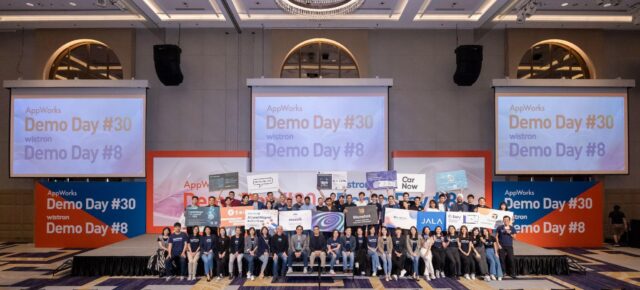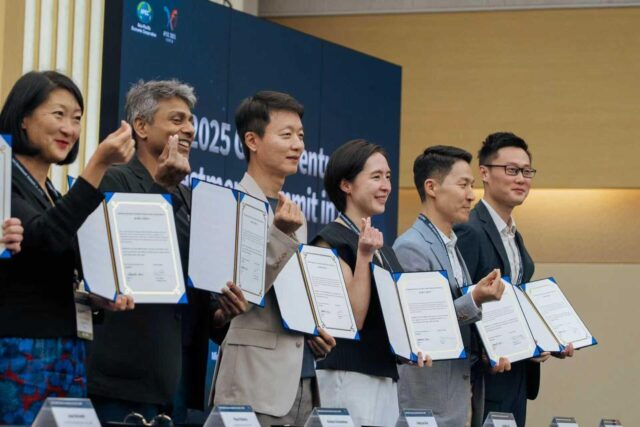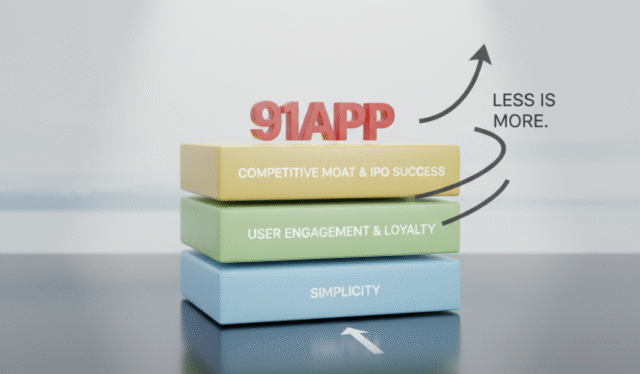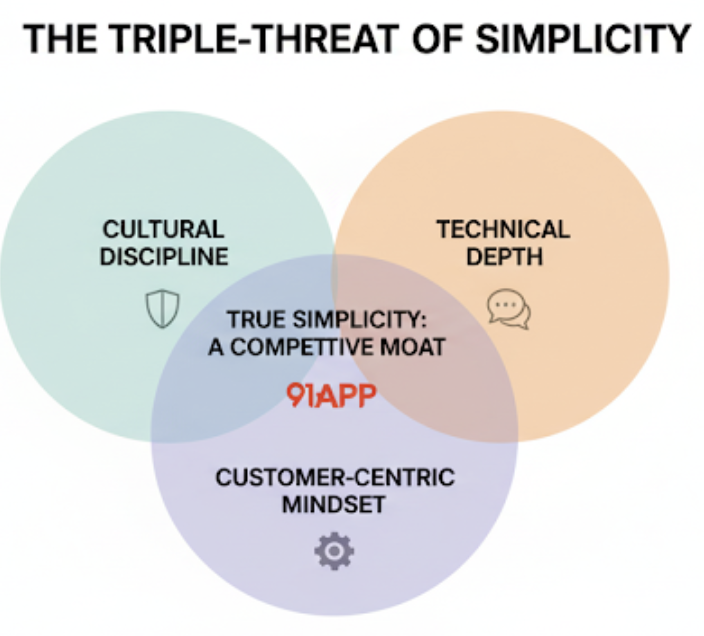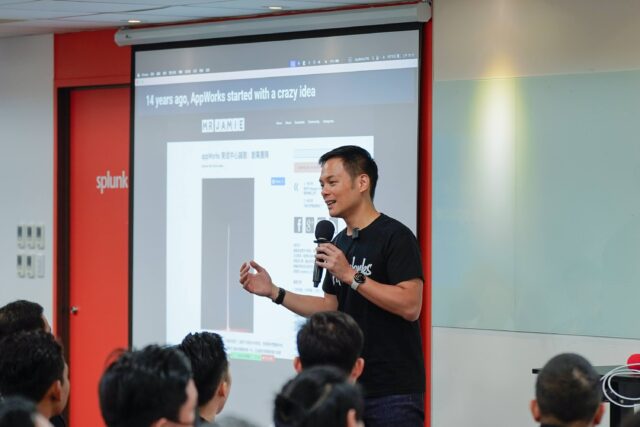
AppWorks Accelerator 在 2010 年由 Jamie 林之晨等創業者,為創業者所成立。每半年招募一屆,對象是來自台灣、亞洲與世界各地的新創團隊。成立 15 年以來,AppWorks Accelerator 總共已招募 31 屆,自 2025 年 11 月起,開放申請的第 32 屆 (AW#32),將特別聚焦在站在科技最前線、致力於改寫產業規則與突破現況的創業者,並邀請正在打造智慧製造(Manufacturing AI)、國防科技(Defense Tech)、以及鏈上金融(On-Chain Banking)相關應用的新創團隊加入。
每次招募團隊,AppWorks 都會收到許多申請書,過程中我們發現,新創團隊在看完網站的介紹後,對我們的加速器計畫仍有些許疑問,因此,我們整理了以下常見問題,希望能為有類似疑惑的你,提供一些解答。
【AppWorks Accelerator #32自 2025 年 11 月開放申請】
- 在加入加速器之前,我需要了解什麼?AppWorks 在幫助創業者充分利用加速器方面做了哪些工作?
AppWorks 致力於提供創業者彈性且全面的體驗,服務台灣本地創業者、以及國際創業者。以下是一些我們獨有的特點:
專為創業者打造的活動:無論你正處於初步驗證、產品開發,還是正在擴張成長,我們都會依照創業階段,設計最適合的活動,協助你持續突破下一個里程碑。
AppWorks 的創業者來自台灣、亞洲美國及全球各地,為了滿足跨時區與多元需求,我們提供實體與線上並行的活動形式,讓你能以最適合自己的方式參與。從工作坊、創業者對談,或是商業媒合,每場活動都經過精心設計,幫助你在每個關鍵時刻加速成長。
亞洲創業網絡:經過 15 年的持續耕耘,我們可以很自豪地分享,AppWorks 已串連起亞洲最活躍的創業生態系,包括創業者社群與投資網絡,遍佈台灣、新加坡、香港、印尼、越南、菲律賓、馬來西亞、韓國與日本,確保你無論身在何處,都能獲得需要的支持。
台灣的市場能量:台灣是亞洲科技創新的核心樞紐,擁有完整的硬體製造鏈、強大的工程與研發人才,以及開放成熟的科技環境。這裡不只是電子與半導體重鎮,更是 AI、國防科技與金融創新的理想實驗場。
AppWorks 深耕台灣超過 15 年,擁有最廣泛且活躍的在地網絡,串連企業龍頭與製造商、創投,以及頂尖學術機構。我們幫助創業者連結供應鏈資源、共同開發解決方案,並加速進入區域市場。
我們強烈建議創業者親自參與 AppWorks 在台灣與亞洲各地舉辦的實體活動,透過面對面的交流,建立更強的關係與更深的洞察,獲得真正能推動成長的連結。
- 什麼是 RFS?AppWorks Accelerator 可以分別提供 AW#32 RFS#1: Manufacturing AI、RFS#2: Defense Tech、RFS#3: On-Chain Banking 新創什麼幫助?
RFS (Request for Startups) 是我們在每一期加速器中特別關注的主題,代表我們認為具有發展潛力、值得優秀創業者投入的方向。RFS 不是限制,而是我們希望創業者留意的訊號,讓創業者了解 AppWorks 此期聚焦的重點與我們能提供的資源。
如果你的創業題目正好屬於這些關鍵領域,我們很期待認識你;若不是,但你認為自己的解決方案與我們關注的方向相契合,或者相信加入 AppWorks 社群將能帶來策略性的成長,也同樣非常歡迎申請。
AppWorks 正在尋找致力於 智慧製造(Manufacturing AI)、國防科技(Defense Tech)、以及 鏈上金融(On-Chain Banking) 的創業者。我們相信,這三個領域將在未來十年改變亞洲的產業結構與經濟基礎,也是台灣與 AppWorks 的社群能為創業者發揮助力的地方
AW#32 RFS#1: 智慧製造(Manufacturing AI)
過去兩年 AI 的加速發展,讓我們看到了 AI 正全面改變製造業的運作模式,從產品設計、生產製程,到後續維運,皆有機會被大幅翻轉 – 現在正是製造產業迎向智能化升級的關鍵時刻。
台灣擁有世界級的製造與供應鏈生態系,AppWorks 能協助創業者直接連結頂尖 OEM、製造商與跨產業夥伴,共同驗證 PoC、開發 AI 驅動的自動化、品質檢測與預測維護等實際應用。
同時,我們的社群中已聚集眾多 AI 與製造相關的新創,例如可加速織品開發流程的 NunoX (AW#31)、提供精細音訊分離技術的 Relajet (AW#17)、以聲音監測進行預防性維護的 Groundup.AI (AW#27) 等等。透過彼此共同開發、銷售或是經驗分享,AppWorks 社群能幫助你更快驗證、更快落地,推動產品從原型走向規模。
AW#32 RFS#2: 國防科技(Defense Tech)
在地緣政治緊張、各國追求供應鏈與關鍵技術自主的時代,具「雙重用途」的科技—如無人系統、感測、資安、AI 模型與新材料,正快速成為維護國家與產業安全的關鍵力量;這同時也代表著新創能以創新技術切入高門檻市場的機會。
AppWorks 加速器、以及我們與緯創集團共同運營的緯創加速器(Wistron Accelerator),長期聚焦於硬體、AIoT 與深科技領域,提供從製造生產到概念驗證的場域。
同時,我們的社群中已有多支深科技新創,提供國防與商業最前沿的科技應用。包括打造航太與小型衛星推進技術的 Aliena (AW#30)、東南亞最大的農工業無人機服務供應商 Aonic (AW#30)、提供高精度定位與地圖資料解決方案的 UNL Global (AW#30) 與 Mapxus (AW#30) 等等。
在這樣的生態網絡中,AppWorks 將協助新創團隊媒合製造與企業夥伴,開展 PoC 與試驗合作,並連結投資人與技術人才,幫助你強化研發實力、拓展商務應用。
AW#32 RFS#3: 鏈上金融(On-Chain Banking)
我們相信金融的未來,將是程式化、透明且全球化的。AppWorks 正在尋找致力於用 Web3 技術重構金融基礎設施的創業者,包含資產代幣化、去中心化清算與結算、跨境支付,以及鏈上合規與監管工具等領域。
在這條通往新金融架構的路上,AppWorks 能協助你了解亞洲的金融科技生態,連結區域內的金融機構、法遵顧問與投資人,同時透過 AppWorks 社群中橫跨亞洲九個不同市場的 Fintech、LegalTech、Web3 創業者與導師網絡,我們能為你提供在受監管市場中擴張的實戰經驗與策略建議。
無論你正在打造下一代 AI 智慧工廠、研發國防自主科技,或建立鏈上銀行的基礎架構,AppWorks 的定位,並不只是加速器,而是你進入台灣與亞洲市場的策略夥伴。我們期待與你一起,從原型走向規模,從實驗室走進現場。
- AppWorks Accelerator 可以提供 web3 新創什麼幫助?
隨著我們 web3 創業者社群的成長,為參與其中的創業者,創造出越來越多建立策略夥伴關係、知識交流的機會,並可促成創業者彼此之間互相幫助。 AppWorks 社群可為 web3 創業者提供獨特的加值服務:
1. 與亞洲最活躍的 web3 創業者社群共同成長
由 AppWorks 建立起的 web3 生態系,已累積 156 支活躍新創團隊、共計超過 424 位創業者,這些傑出的 web3 新創,包括實現資產未來收益代幣化的 Pendle (AW#20),聚合鏈上投票權並幫助協議用戶完成去中心化治理投票的 Event Horizon (AW#28);透過「Delta 中性」策略和超額抵押機制,發行穩定幣的 Resolv (AW#30)
AppWorks 團隊長期協助創業者之間建立連結,將資源與人脈引介給各新創團隊,並從不同創業者身上,交流學習各種創業相關經驗與秘訣。
2. 與 Web2 與 Web3 領域的關鍵夥伴建立 PoC 與產品整合機會
AppWorks 與台灣的金融產業龍頭、電信公司、以及交易所維持深度合作,為提供鏈上金融服務的區塊鏈公司,打造真實的 PoC 測試與落地機會。
除了活躍的 Web3 生態外,我們也擁有強大且在各自產業領域領先的 Web2 創業者與企業社群,讓 Web3 團隊能與不同用戶群輪廓的夥伴合作、測試產品,並快速驗證市場需求。
3. 在快速發展的 web3 生態系保持領先,並獲得優質的開發合作夥伴
AppWorks web3 生態系中,有近 95 支區塊鏈團隊已經在各種公鏈上開發產品,包括 Ethereum、Solana、Arbitrum、Hyperliquid、Sui、TON、Base 等。創業者可在社群中找到具實戰經驗的夥伴,共同開發產品或交流技術。
此外,AppWorks 也與全球知名的開發工具、審計公司、造市商與雲端服務供應商合作,包括 GSR、Quantstamp、Chainlink 等,為新創提供專業資源與支援。
- 如果我的新創已經完成 Series A/B 募資、或是已經開始獲利,AppWorks Accelerator 還適合我嗎?
我們並沒有限定申請團隊的成熟階段,無論是正處於早期、或是已規模化擴張的團隊,只要你認為在創業過程中,AppWorks 能提供到你所需要幫助,都歡迎申請加入。
依過去的案例,也有許多較成熟的團隊加入,例如,有些團隊已經在台灣做出不錯的成績,想往東南亞發展,AppWorks 可以成為新創佈局東南亞的橋樑或跳板。
或者是規模已不小的國際團隊,如果想在台灣建立技術團隊或開發市場商機,加入 AppWorks, 可以成為在台落地的第一步。像是例如來自新加坡、在 2016 年進駐 AW#13 的 ShopBack,早在 2014 年就創立,並在 2015 年完成種子輪募資並在新加坡推出服務,而透過在 AppWorks Accelerator 的時間,ShopBack 在台灣建立起技術團隊,並同時驗證了測試台灣市場的發展性可能性。如今,台灣已是 Shopback 所有經營的市場中,重要的營收來源和核心研發基地。
- AppWorks Accelerator 可以提供想進入國際市場的新創什麼幫助?
AppWorks Accelerator 自 2010 年啟動迄今,累積了廣大的創業者社群與 VC 夥伴網絡,協助新創團隊在進入新市場時能快速獲取關鍵資源,並向當地的創業者學習因地制宜的商業模式。
目前,我們的社群中已有超過 600 家活躍的科技公司,其中超過 300 間已經是跨市場經營的企業。社群中不僅包含加速器校友新創與 AppWorks 基金投資的國際團隊,也有眾多曾成功規模化或退出的創業者與 Mentors。
他們分布於 亞洲 9 個市場:新加坡、印尼、越南、菲律賓、馬來西亞、韓國、日本、香港與台灣,這代表無論你想進入哪個市場,AppWorks 社群中都已有在地的創業者群體,以及曾成功拓展跨國事業的創業者,能與你交流經驗、協助引薦人脈,加速你在新市場的落地。
除了創業者社群以外,AppWorks 另外在 AI、web3 等領域投資超過 25 個創投基金,包含 AC Ventures、 Golden Gate Ventures、 Openspace Ventures、Ascend Vietnam Ventures、Figment Capital、Pantera 等。
此外,AppWorks 與認同我們理念的基金投資人合作,其中包括在科技製造、金融、媒體、電信等領域領先的企業,基金也獲得馬來西亞主權基金與韓國政府投資機構的支持,並與印尼最大的電信公司建立策略夥伴關係,進一步鞏固我們在亞洲的布局,讓新創團隊進入新市場時,能與不同區域的投資人合作、更有效率的拓展人脈與商機。
- AppWorks Accelerator 要收費嗎?
AppWorks Accelerator 是針對創業者完全免費的服務。我們不會向新創團隊收取租金、服務費,也不會要求技術股、選擇權、營收、獲利分成,或是 Token 等任何形式的回饋。
- 我們現在需要一筆資金,加入 AppWorks 就可以被投資嗎?
相較於其他新創團隊,參與 AppWorks Accelerator 的創業者,有更多與我們深度交流的機會,自然也就有更高的合作機率。無論參與的新創處於什麼階段,我們都會與創業者討論,什麼是現階段最需要且適合你的幫助。在對的時間點,當資金可以大幅提升該新創的實力與競爭優勢,我們會全力協助你完成該輪募資。但有些時候,創業者當下更重要的任務,是解決其他更急迫的問題,包括重新定義市場問題、 探索正確的目標客群、或是尋找更強的 Product Market Fit 等等。
AppWorks 管理四支創投基金規模共 3.9 億美元,無論是關於募資,或是其他策略面向的討論,我們隨時準備好提供你最適切的建議與協助。
- 我的服務 (或產品) 還沒開始賺錢,這樣能申請嗎?
當然可以。從公司創立到找到可規模化商業模式這段期間,稱為「種子期」。種子期新創公司需要的多半不是資金,而是各種與創業有關的知識、啟發,以及嘗試與犯錯的空間。AppWorks Accelerator 有豐富的經驗,協助種子期新創尋找可規模化商業模式,幫助他們順利邁向下一階段。
- 加入 AppWorks Accelerator 一定要設立公司嗎?
不一定,但我們會建議做 B2B 的團隊設立公司。根據我們的經驗,這將有助於你與潛在事業夥伴洽談後續合作。AppWorks 有專業的會計與法務專家,可以為創業者提供成立公司過程中所需要的協助;以及為計劃擴張到台灣的團隊處理落地的手續。
- 我不是台灣公民,能否幫忙申請簽證?
入選 AppWorks Accelerator 的國際創業者,可根據個人的需求與條件,由 AppWorks 提供協助,申請 Gold Card 就業金卡、 Entrepreneur Visa 創業家簽證 ,讓來自海外的創業者能在台灣專心工作,不需為了簽證問題出境往返。
- 新創的申請書中,AppWorks 注重的內容有哪些?
我們特別重視驅動創業者長期持續自我精進、沿途排除阻礙,非得要抵達的北極星。此外,以下幾個問題,也是我們關注的:
- 為什麼要創業?
- 你希望透過創業解決什麼問題?為什麼?
- 你相信世界上,還有哪些尚未被滿足的基本需求?
- 你希望創造什麼樣的未來?計畫如何去實現?
- 你已經做了哪些努力來證明你正在解決這些問題?
- 申請書的題目都是英文,用中文寫會不會影響分數?
AppWorks Accelerator 的線上申請書共有約 30 個題目,包含團隊、產品、商業模式,與市場分析等眾多面向,非常詳盡,需要花一定的時間與心思填寫。我們希望透過這些題目協助每一個來申請的團隊,釐清自己當下的發展狀態與所需協助。
填寫報名表是一種自我健檢,因為在填寫過程中,創業者必須深入思考自己的產品、市場策略、團隊分工,以及整體產業環境。因此,不管申請與否,我們都建議創業者針對這些問題仔細思考、研究。
在 AppWorks,創業者有大量使用英文的機會,與各國創業者、投資人與企業夥伴溝通交流。因此,我們鼓勵你嘗試以英文作答。用中文填寫並不會影響評估結果,最重要的是必須清楚表達你想傳達的訊息。另外,我們也需要創辦人/CEO 拍攝一段一分鐘的自我介紹與產品說明影片,讓我們不僅是透過文字,能夠更加認識你。
- 第一階段 VS. 第二階段申請有何差別?
AppWorks Accelerator 的面談與入選採先收先審方式 (Rolling-basis),根據過去的經驗,先繳交申請書的團隊,有較高的入選機率,且能提早知道自己已經入選,有更充裕的時間預先規劃相關事宜。因此,我們會鼓勵創業者在第一階段就填寫申請書,以免到了最後申請截止前夕,競爭變得更加激烈。
- 我以前有申請過 AppWorks 被拒絕了、還能再申請嗎?是否會影響錄取的機率呢?
不會影響錄取率。我們會評估你在這段時間的進展,無論是 Founder 本身的成長,或是公司的拓展。整體而言,再次申請代表了創業者的決心,對我們來說是正面的訊號。過去也有創業者申請了 2~3 次才獲選。有的案例是在申請未果後,仍繼續耐心摸索,最終成功增長更多的用戶、也累積了更深入的洞察;有的案例則是坦誠面對沒有 PMF 的事實,更換了題目後,找到可擴展的商業模式而再次申請,而這些創業者自加速器畢業後的表現也相當優秀。
希望以上整理能幫助你釐清對 AppWorks Accelerator 的諸多疑問。若還有其他需要進一步瞭解的地方,歡迎留言給我們,或是來信至:[email protected],我們將盡量為你解答。
【歡迎所有不滿足於現狀、正致力於以嶄新方式突破傳統的創業者,加入專為你們服務的 AppWorks Accelerator,AW#32 申請截止日為 2026 年 1 月 11 日】
